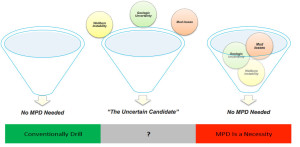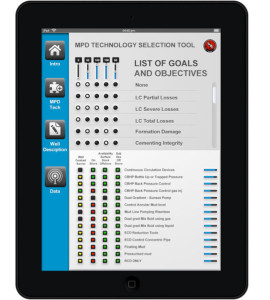Panel: Reduced cost, proper ID of candidate wells would expand MPD utilization
By Katie Mazerov, contributing editor

Managed pressure drilling (MPD) can deliver tremendous value in challenging reservoirs and is increasingly viewed as the way of the future. Yet, challenges around cost, personnel expertise and training, and equipment deployment continue to pose barriers to more widespread adoption of MPD, according to a panel of experts. “When done properly, MPD can reduce nonproductive time and increase rates of penetration by solving a wide range of reservoir challenges,” said Steve Tkach, drilling engineer for Chevron, which has conducted 25 underbalanced operations since the 1990s and six MPD projects between 2010 and 2013, including three deepwater wells and one shelf well in the Gulf of Mexico (GOM). “We have realized as a company that there are multiple benefits to MPD, and we’re looking at increasing utilization of the technology in 2014 and beyond.”
Mr Tkach, along with Jacques Bourque, vice president, technology, Schlumberger Integrated Project Management, and Robert Ziegler, head of deepwater drilling technology for Petronas Carigali, shared their observations in a panel discussion at the 2013 IADC/SPE Managed Pressure Drilling & Underbalanced Operations Conference & Exhibition, 17-18 April in San Antonio.
On a typical GOM shelf well, Chevron has used MPD to address issues such as drilling through depleted sands; ballooning; narrow mud weight operating windows; pore pressure, fracture gradient and stability uncertainties; areas with close proximity to salt domes; wellbore instability, and kick/loss detection.

Underlying the barriers to accelerate MPD utilization is the challenge of properly identifying candidate wells, particularly those that exhibit only some of the classic characteristics, Mr Tkach said. “These are cases where we often find out too late that we should have deployed MPD.” To that end, Chevron is working internally to develop data that can be used to better determine when MPD should be deployed.
The company also has developed protocols for in-house training, selection of appropriate MPD equipment, collaboration with multiple service providers, and completing necessary rig modifications well ahead of operations. “Good communication from the head office to the rig also is essential,” he added. “Failures in MPD center heavily around poor communication.”
Petronas, which has adopted MPD into its offshore operations, views it as a philosophy, not a tool in the toolbox that can be deployed on an as-needed basis, Mr Ziegler noted. Further, equipment design is essential if MPD is to gain more acceptance in the offshore sector. “Floaters pose special challenges. Pressurizing the riser is seen differently by various drilling contractors, and riser vendors often take a legalistic, rather than an engineering, view,” he said.
Mr Ziegler also chided the MPD community, noting that while united in its embrace of the technology, it may have missed an opportunity to market itself as a key safety game-changer post-Macondo. “There is consistent statistical evidence, across a variety of regression models and variable specifications, that the use of rotating control devices decreases the incidence of blowouts.”
Going forward, “operators must communicate the desirability of MPD-ready designs, along with the required specifications if the technology is going to be available when needed,” he continued. MPD equipment integration also can deliver improvements to conventional well control equipment, such as choke manifolds and automatic chokes, he added.
Reducing equipment costs and providing more training, case studies and forums also could accelerate utilization, Mr Bourque noted. “MPD projects can have a seemingly endless and bewildering array of options, each of which can contradict each other to solve drilling, production and reservoir problems. Engineers need to understand how to choose from the various options,” Mr Ziegler said.
Collaboration among the various industry sectors is also critical, he said. “Even technologies with strong value propositions face slow uptake,” Mr Bourque said. “The onus is on the service providers to effectively communicate the value propositions of new technology to the operators. It is also apparent that some operators don’t have optimized programs for technology transfer within their own organizations.”
He added that expanded use of the IADC MPD Technology Selection Tool can be valuable in helping engineers determine when and how to deploy the appropriate MPD technologies.
Click here to register for access to the MPD tool.




